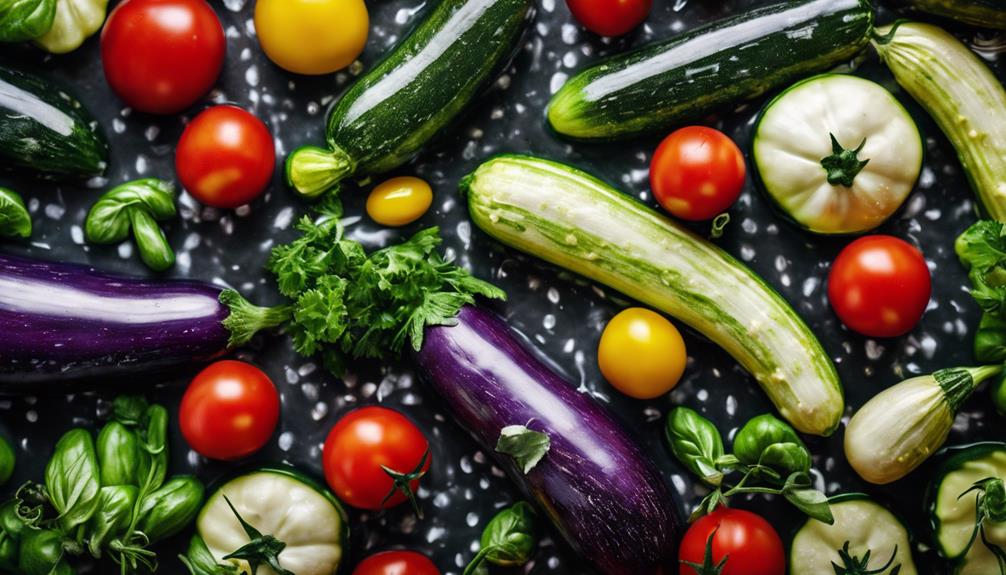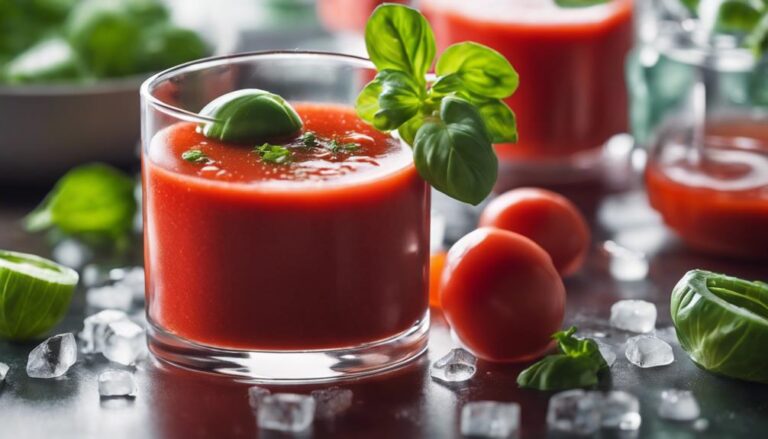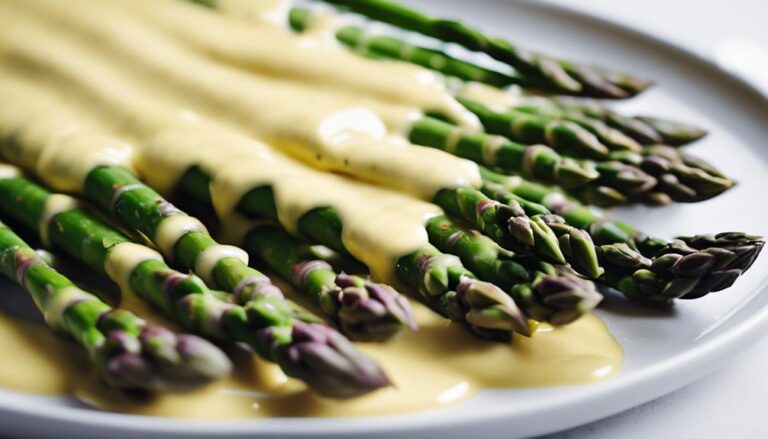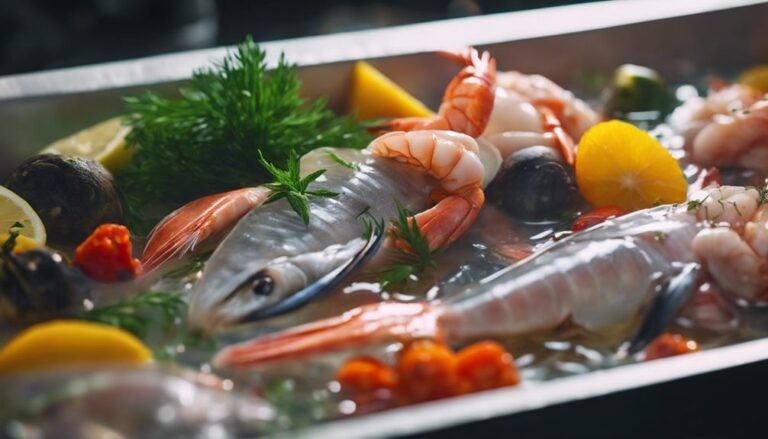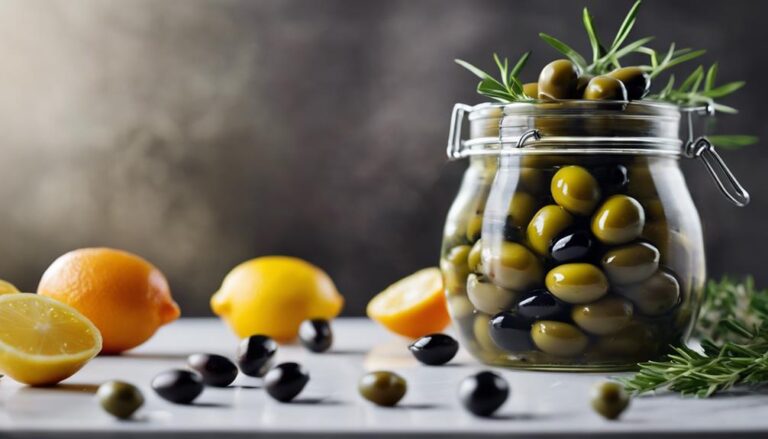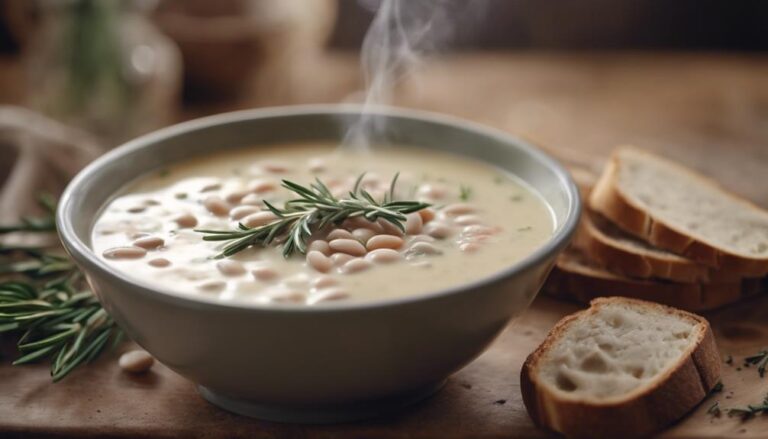Ratatouille: Vegetables Sous Vide in Olive Oil and Herbs
Indulge in a culinary masterpiece with Ratatouille: Vegetables Sous Vide in Olive Oil and Herbs. Experience the rich flavors of Provencal tradition elevated to perfection. Every vegetable tenderly infused with savory herbs and olive oil, ensuring a burst of taste in every bite. The sous vide method locks in flavors, preserving textures for a harmonious blend of taste and visual appeal. Embrace the art of precision cooking and enhance your dining experience. Discover the secrets behind this exquisite dish and reveal a world of culinary delights.
What You Will Learn Here
- Sous vide cooking method preserves nutrients and flavors effectively.
- Olive oil and herb infusion intensifies vegetable flavors.
- Vegetables maintain natural textures while cooking sous vide.
- Precise temperature control ensures ideal vegetable doneness.
- Vacuum-sealing with herbs and olive oil locks in flavors perfectly.
Origins of Ratatouille
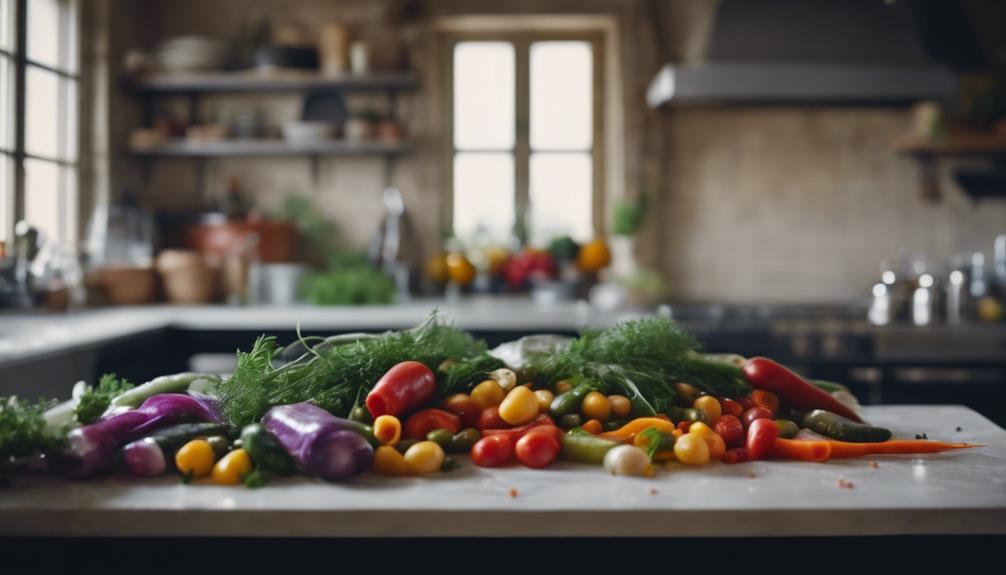
Ratatouille has a rich history rooted in the sunny region of Nice, France. The dish's diverse ingredients and cooking methods showcase the culinary traditions of Provence.
Exploring the origins of ratatouille can offer insights into its cultural importance and variations across different regions.
Historical Origins Overview
Originating in the picturesque region of Provence, France, the traditional vegetable dish known as Ratatouille exemplifies the essence of summer bounty. This peasant dish, once a humble meal for the working class, now graces tables worldwide with its vibrant mix of olive oil-infused vegetables.
The name 'ratatouille' itself reflects the essence of the dish, derived from the Occitan word 'ratatolha' and the French 'touiller,' meaning to stir – a nod to the dish's preparation method. Ratatouille's rich history is intertwined with the region's agricultural roots, where farmers cultivated an array of fresh produce.
Today, this flavorful medley of zucchini, tomatoes, bell peppers, eggplant, and onions continues to be a beloved dish, celebrating Provence's culinary heritage.
Regional Variations Explained
In exploring the diverse regional variations of this iconic vegetable dish, you encounter a tapestry of flavors that reflect the dynamic culinary landscape of Provence, France. Ratatouille's roots in Provence have influenced its regional adaptations, with each area adding its twist to the classic recipe.
Some regions incorporate additional ingredients like garlic, olives, and herbs, enhancing the dish's complexity. The use of olive oil, a staple in Mediterranean cuisine, is consistent across most variations, infusing the vegetables with a rich and fruity undertone.
When prepared using the sous vide method, ratatouille retains the vibrant colors and individual flavors of each vegetable, resulting in a harmonious blend of tastes that celebrate the seasonal produce at the heart of this beloved dish.
Cultural Significance Explored
With its humble beginnings in the rustic kitchens of Provence, France, ratatouille emerged as a symbol of resourcefulness and culinary artistry, showcasing the beauty of simple, seasonal ingredients.
This traditional French vegetable stew reflects the cultural essence of utilizing what the land offers in a harmonious blend of flavors. The careful preparation of vegetables like zucchini, tomatoes, bell peppers, eggplant, and onions in olive oil highlights the Mediterranean influence on French cuisine.
The technique of sous vide further enhances the rich flavors and textures while preserving the integrity of each ingredient. Ratatouille's cultural significance lies in its ability to transform humble vegetables into a dish that celebrates tradition, simplicity, and the vibrant essence of Provencal cuisine.
Vegetables in Provencal Seasoning
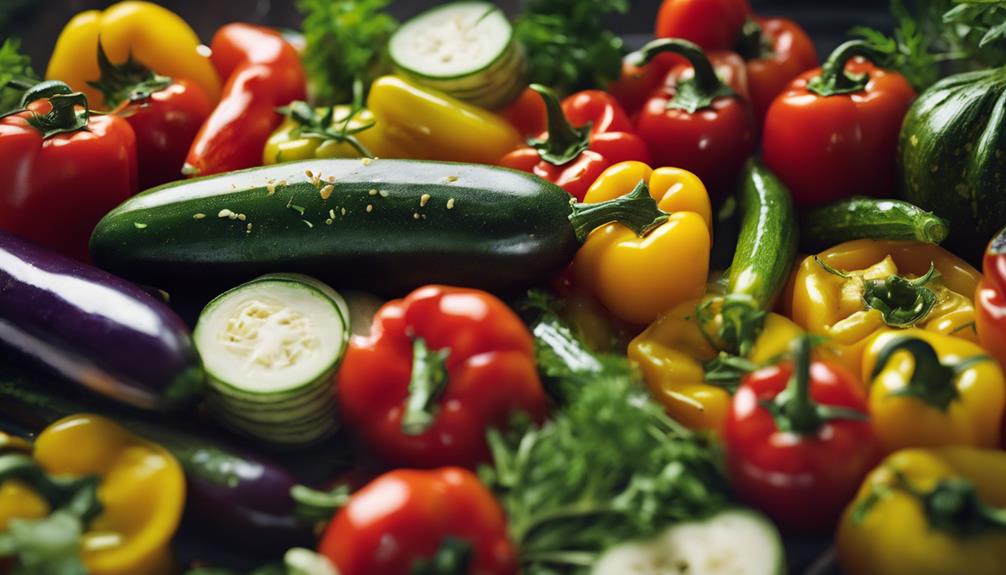
Enhancing the Mediterranean essence of ratatouille, seasoning the vegetables with Provencal herbs like basil, thyme, and bay leaf adds a fragrant and flavorful dimension to this traditional French dish. The combination of these herbs brings a harmonious blend of earthy, fresh, and aromatic notes that elevate the taste profile of the dish.
Here's why Provencal seasoning is a game-changer for your ratatouille experience:
- Authenticity: Provencal herbs are a staple in Mediterranean cuisine, and using them in ratatouille stays true to the dish's origins, infusing it with regional authenticity.
- Aromatic Infusion: The herbs release their oils slowly during the sous vide process, infusing the vegetables with a rich aroma and depth of flavor that seeps into every bite.
- Flavor Complexity: The combination of basil, thyme, and bay leaf adds layers of complexity to the dish, making each vegetable shine while still harmonizing as a whole.
- Visual Appeal: The vibrant colors of the seasoned vegetables create an enticing visual display, making the ratatouille not only a delight for the taste buds but also for the eyes.
Sous Vide Ratatouille Variations
You can explore a variety of sous vide ratatouille variations to elevate your culinary experience.
Try the savory eggplant ratatouille for a rich, hearty dish, or opt for the eggplant and zucchini medley for a delightful blend of flavors and textures.
Experiment with the savory tomato ratatouille recipe for a burst of tangy freshness that complements the other vegetables perfectly.
Savory Eggplant Ratatouille Recipe
For a delicious twist on traditional ratatouille, consider trying the Sous Vide Savory Eggplant Ratatouille recipe featuring a blend of vibrant vegetables cooked to perfection. This dish combines the richness of eggplant, the freshness of zucchini, the sweetness of red pepper, the juiciness of tomatoes, and the savory notes of onion into a harmonious symphony of flavors. Here's why this recipe stands out:
- Sous Vide Perfection: The sous vide cooking method guarantees that each vegetable retains its individual taste and texture, resulting in a mouthwatering dish.
- Herb-Infused: Infused with olive oil, herbs, and balsamic glaze, the vegetables are elevated to a whole new level of taste.
- Vacuum Sealed: By vacuum sealing the seasoned vegetables, the flavors intensify, creating a gastronomic experience like no other.
- Fresh Finish: Tossed with parsley and basil after cooking, the dish receives a final touch of freshness and herbaceous aroma.
Eggplant and Zucchini Medley
With a harmonious blend of eggplant and zucchini, this sous vide ratatouille variation offers a symphony of flavors that are enhanced through precise cooking techniques and herb-infused oils.
- Flavor Fusion: The marriage of eggplant and zucchini creates a rich and satisfying taste profile that's further elevated by the infusion of olive oil and aromatic herbs.
- Texture Perfection: Sous vide cooking guarantees that the vegetables maintain their distinct textures, with the eggplant tender and the zucchini slightly crisp, providing a delightful contrast.
- Controlled Cooking: Through precise control of the cooking temperature, each vegetable is cooked perfectly without losing its individual characteristics, resulting in a harmonious medley of flavors.
- Herbal Harmony: The addition of herbs like parsley and basil not only enhances the overall taste but also brings a fresh and fragrant element to the dish.
Savory Tomato Ratatouille Recipe
Delight your taste buds with a savory tomato ratatouille that showcases a flavorful blend of tomatoes, eggplant, zucchini, red pepper, and onion, all expertly cooked using the sous vide method.
- The vegetables are infused with the rich flavors of olive oil and herbs, elevating the dish's taste profile.
- Sous vide cooking guarantees precise temperature control, ensuring that each vegetable is cooked to perfection.
- By vacuum sealing the vegetables and immersing them in a water bath for 2 hours at 85˚C, the flavors are intensified, and the textures are wonderfully preserved.
- This technique not only retains the nutrients of the vegetables but also creates a visually appealing dish that's as pleasing to the eye as it's to the palate.
Sous Vide Cooking Techniques
When it comes to sous vide cooking techniques, the exact method guarantees that your vegetables are cooked to perfection every time.
The flavorful herb infusion that occurs during sous vide cooking adds an extra layer of taste that you won't achieve through traditional cooking methods.
What truly sets sous vide cooking apart is the ideal texture it brings out in vegetables, resulting in a dish that's both tender and bursting with flavor.
Precise Sous Vide Method
For achieving perfectly cooked vegetables with ideal nutrient retention and enhanced flavors, sous vide cooking employs a meticulous technique of vacuum sealing food in bags and immersing them in a precisely controlled water bath for a specific duration.
This method guarantees that each vegetable is cooked at a precise temperature, such as 185ºF (85ºC) for zucchinis, tomatoes, bell peppers, eggplant, and onions, preserving their nutrients and flavors. By cooking each vegetable in its own bag with seasonings like garlic, olive oil, and basil, sous vide enhances the taste profile of the dish.
Compared to traditional stovetop cooking methods, sous vide cooking excels in preserving the nutrients, flavors, and textures of the vegetables, resulting in a deliciously tender and flavorful ratatouille dish when combined and seasoned to taste.
Flavorful Herb Infusion
Infusing vegetables with a blend of olive oil and herbs through sous vide cooking results in an intensified and well-balanced flavor profile that enhances the overall dining experience.
The precise control offered by sous vide cooking allows the herbs and olive oil to saturate the vegetables thoroughly, guaranteeing a consistent infusion of flavors.
The methodical process of sous vide cooking ensures that the vegetables are cooked evenly and maintain their natural textures while absorbing the delicious herb-infused olive oil.
This infusion not only enhances the taste of the vegetables but also brings out the aromatic qualities of the herbs, creating a harmonious blend of flavors.
The result is a dish that isn't only visually appealing but also bursting with rich and vibrant tastes.
Optimal Vegetable Texture
Achieving ideal vegetable texture through sous vide cooking techniques involves precise temperature control and extended cooking durations to guarantee uniformity and tenderness.
When using a sous vide machine, vacuum-sealing the vegetables with olive oil and herbs assures that flavors are locked in while maintaining moisture. The precise temperatures maintained in the water bath allow for even cooking, resulting in vegetables that are cooked to perfection from edge to center.
Final Thoughts
In considering the culmination of flavors and textures achieved through sous vide cooking, one can't help but appreciate the artistry and precision that elevates ratatouille to a culinary masterpiece. The meticulous process of sealing each vegetable in its own sous vide bag with olive oil, herbs, and aromatics guarantees that every ingredient retains its distinct taste and texture. This method not only preserves the individual characteristics of vegetables like zucchini, tomatoes, bell peppers, eggplant, and onion but also allows them to reach their best level of doneness without any risk of overcooking or undercooking.
The harmonious blend of flavors and textures that results from combining these perfectly cooked vegetables just before serving creates a symphony of tastes on the palate. The rich infusion of olive oil and herbs adds depth and complexity to the dish, making sous vide ratatouille not only delicious but also visually appealing. Whether served as a side dish, mixed with pasta, layered in sandwiches, or tossed in salads, sous vide ratatouille offers a versatile and satisfying meal option that showcases the beauty of precise cooking techniques.
Frequently Asked Questions
What Is the Best Temperature for Sous Vide Vegetables?
For the best sous vide vegetables, aim for temperatures between 183°F to 185°F. This range maintains veggies tender yet firm, conserves colors and nutrients, and guarantees even cooking. Sous vide techniques assure flavorful veggies every time.
What Cooking Method Is Used for Ratatouille?
For cooking ratatouille, the sous vide method seals veggies in bags and cooks them precisely in water. This technique preserves flavors and textures well. It's popular for maintaining distinct tastes, colors, and achieving consistent results.
What to Cook With Ratatouille?
Pair ratatouille with grilled chicken for a hearty meal. Substitute eggplant with zucchini for a twist. Enhance the flavor with fresh basil. Serve over couscous for a Mediterranean flair. Try roasting ratatouille for a caramelized touch.
What Is Ratatouille in Culinary Arts?
In culinary arts, ratatouille is a classic French dish that embodies the essence of Mediterranean flavors. It is a vegetable medley showcasing the culinary history of vibrant colors and rich tastes, offering various ratatouille variations to suit different palates.
Conclusion
Indulge in the rich flavors of ratatouille, a classic French dish that showcases the beauty of vegetables cooked in olive oil and herbs.
The sous vide technique elevates this dish to a whole new level, ensuring each ingredient is perfectly cooked and bursting with flavor.
Whether you stick to tradition or experiment with different variations, ratatouille is a versatile and delicious dish that will surely impress your taste buds.
Bon appétit!
